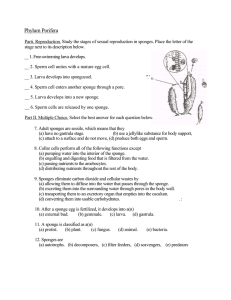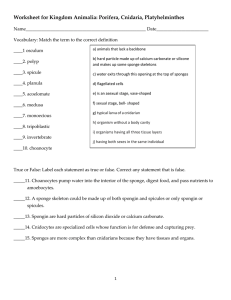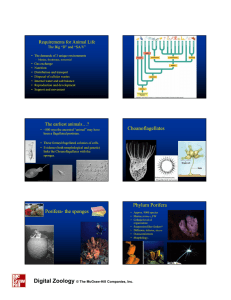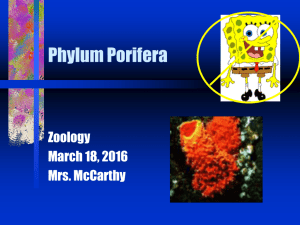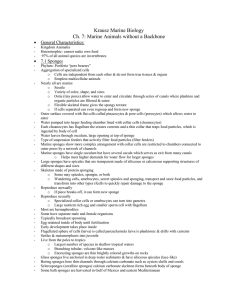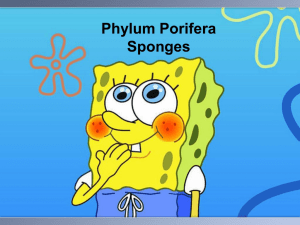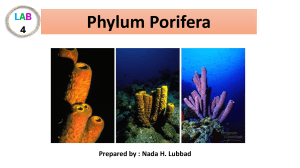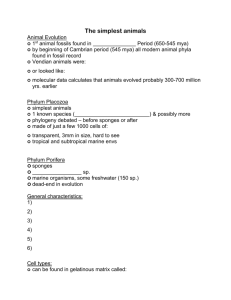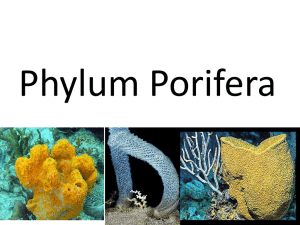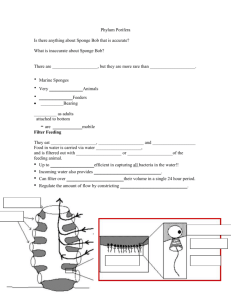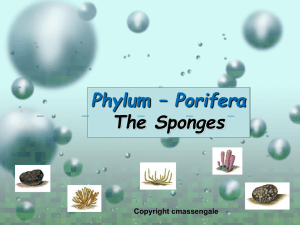2.Sponges
advertisement
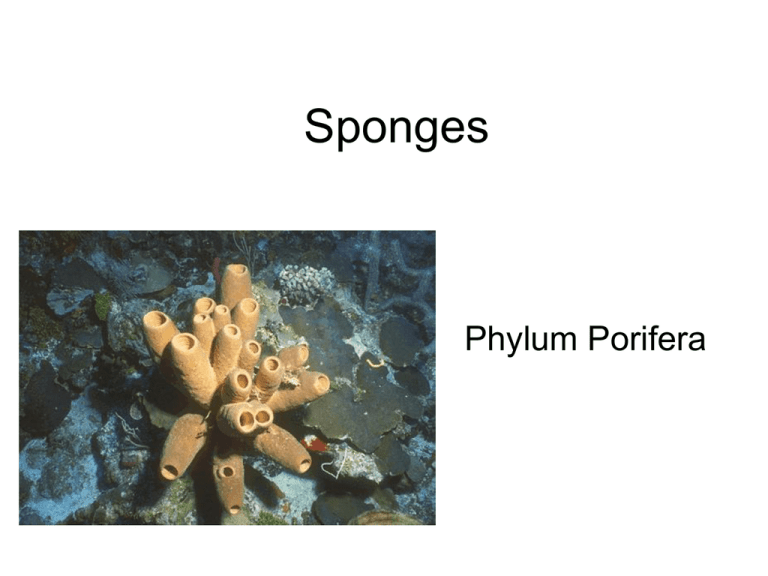
Sponges Phylum Porifera Phylum Porifera – Pore Bearers Water flow Osculum Central cavity Pores Choanocyte Spicule Pore cell Pore Epidermal cell Archaeocyte • Groups of specialized cells, do not form true tissues or organs • Sessile-attached to surface • Pores allow water/plankton to circulate (suspension/filter-feeders) • Asymmetry • Choanocytes – collar cells that pump water in with flagella, create currents and trap food particles • Osculum – large opening for water to exit • Feeding, circulation, excretion, respiration • Simple skeleton – Spicules – transparent support structures made of calcium carbonate/silica – Spongin - protein – Amebocytes – mobile cells to secrete spicules and Feeding • Suspension/Filter feeders-actively filtering food particles • Intracellular digestion • Choanocytes trap food/pass it on • Amebocytes – complete digestion by transporting and storing food particles Respiration, Feeding, Excretion • Water circulation • diffusion Response • Lacks nervous system • Produce toxins Sexual Reproduction and Life Cycle MEIOSIS Sperm from a sponge are released into the surrounding water-Spawning. Water currents carry the sperm to other sponges. Haploid (N) Diploid (2N) New sponge Sperm (N) Mature sponge Metamorphosis (2N) Egg (N) Swimming larva The zygote develops into a free-swimming larva. Water currents carry the larva until it attaches to a surface and grows into a new sponge. Larva (2N) Sperm enter another sponge through pores. The sperm are carried to eggs inside the body wall. Sperm fertilize eggs. FERTILIZATION Reproduction – Cont. • Sexual Reproduction Gametes-sex cells developed from certain amebocytes (most sponges can produce both) • Asexual Reproduction Budding-branches or buds break off and grow into separate sponges identical to parent Types of Sponges • Encrusting-form thin growths on rocks/dead coral (sometimes bright colors) Red bearded sponge • Glass-anchored in deep-water sediments, lace-like skeleton of fused spicules (ex. Venus Flower Basket) • Boring-bore thin channels through calcium carbonate shells such as oysters and coral • Coralline/Sclero-calcium carbonate skeleton with spicules and spongin form under its body (first known as fossils) Ecology • Symbiotic relationships with bacteria, algae, protists • Habitats
